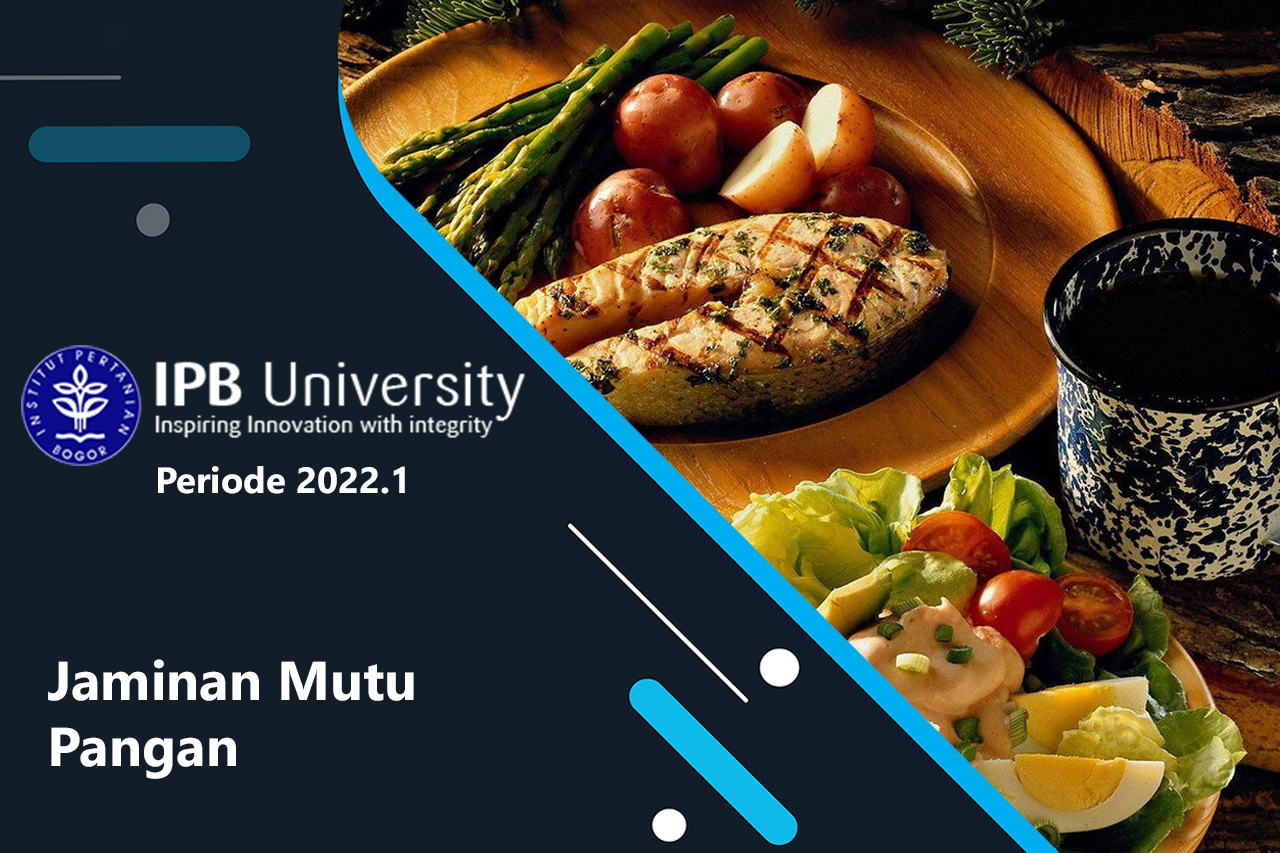About This Course
The course covers the principle of quality assurance in food industry such as determination of key quality characteristic, sampling, measurement and test procedure, specification and standard. Then, it explains some quality manage-ment systems and its certification for an organization while exploring all essential quality management tools such as tools for understanding the process (flow chart, cause and effect diagram), tools for collecting, organizing, analyzing and under-standing data (check sheet, pareto chart, histogram) and process control (SPC, Cp, Cpk).
Course Objectives
To give the student an integrated knowledge on scientific, technical and affective aspects of food quality assurance. This course educates the students about the importance of legal standards and how to comply with and then managing the quality systems which focused on assuring the quality aspects of both the product and the company organization. Additional competence is emphazised on define, measure, analyze, control and improve the key quality characteristic by exploring quality management tools.
Course Learning Outcomes
Upon successful completion of this course the student will be able to:
1. describe quality concept development and use terms in quality management system.
2. identify and compare intrinsic key quality characteristic as well as extrinsic key quality characteristic of food.
3. describe specification and type of standards, select a standard.
4. apply quality management tools for collecting, organizing, analyzing and understanding data.
5. apply quality management tools for understanding the process, controlling variations and fluctuations of product quality and planning to improve the quality.
6. apply SPC and SQC for variable
7. apply SPC and SQC for attribute data.
8. describe acceptance sampling and acceptance quality level (AQL).
9. describe quality inspection, examination, measurement, analysis and control.
10. describe quality management system principles.
11. construct quality management systems for certification.
12. apply food quality assurance scheme
13. able to conduct auditing write a report and analyze the audit result, able to follow up audit write recommendation.
14 compare the cost of quality.
1. describe quality concept development and use terms in quality management system.
2. identify and compare intrinsic key quality characteristic as well as extrinsic key quality characteristic of food.
3. describe specification and type of standards, select a standard.
4. apply quality management tools for collecting, organizing, analyzing and understanding data.
5. apply quality management tools for understanding the process, controlling variations and fluctuations of product quality and planning to improve the quality.
6. apply SPC and SQC for variable
7. apply SPC and SQC for attribute data.
8. describe acceptance sampling and acceptance quality level (AQL).
9. describe quality inspection, examination, measurement, analysis and control.
10. describe quality management system principles.
11. construct quality management systems for certification.
12. apply food quality assurance scheme
13. able to conduct auditing write a report and analyze the audit result, able to follow up audit write recommendation.
14 compare the cost of quality.
Course Topics
1. Introduction to Food Quality Assurance
2. Intrinsic and extrinsic key quality characteristics of foods
3. Standard and specification
4. Quality tools for collecting, organizing, analyzing data
5. Quality tools for controlling variations and fluctuations
6. Variable control charts and process capability
7. Attribute control charts
8. Acceptance sampling
9. Quality inspection, examination, measurement, analysis, and control
10. Quality management systems and their principles
11. Quality management systems and their certification scheme
12. Food quality assurance scheme and Legal aspect of food quality assurance in Indonesia
13. Quality audit
14. Cost of quality
2. Intrinsic and extrinsic key quality characteristics of foods
3. Standard and specification
4. Quality tools for collecting, organizing, analyzing data
5. Quality tools for controlling variations and fluctuations
6. Variable control charts and process capability
7. Attribute control charts
8. Acceptance sampling
9. Quality inspection, examination, measurement, analysis, and control
10. Quality management systems and their principles
11. Quality management systems and their certification scheme
12. Food quality assurance scheme and Legal aspect of food quality assurance in Indonesia
13. Quality audit
14. Cost of quality
Course Staff
- Dr. Muhammad Arpah
- Dr. Ir. Adil Basuki Ahza
- Dr. Azis Boing Sitanggang
- Dr. Tjahja Muhandri
- Dr. Fahim M. Taqi

